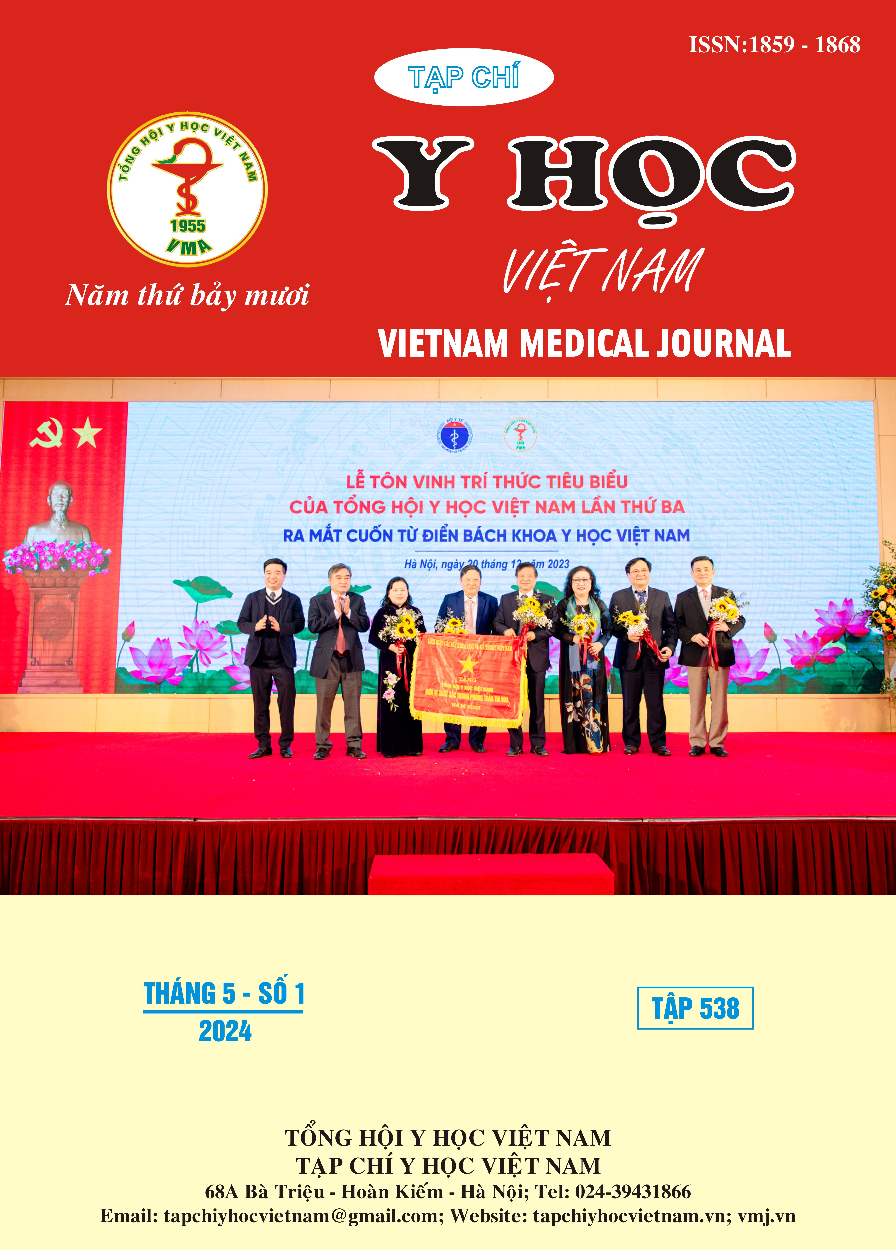EFFECTIVENESS OF PAIN REDUCTION WITH TRANSMUSCULAR QUADRATUS LUMBAR ANESTHESIA IN LAPAROSCOPIC COLORECTAL SURGERY
Main Article Content
Abstract
Background: Currently, lower thoracic epidural anesthesia is no longer considered the gold standard for perioperative analgesia in laparoscopic colorectal surgery. Regional anesthesia approaches are considered as alternative pain relief options. The transmuscular quadratus lumborum block, in particular, exhibits theoretical advantages conducive to efficacious pain relief after laparoscopic colorectal surgery, including prolonged analgesic duration and the potential to extend into the paravertebral space, thereby mitigating visceral pain. Objective: To assess the analgesic effectiveness and side effects associated with the transmuscular quadratus lumborum block 86after laparoscopic colorectal resection surgery. Subjects and Methods: A randomized, controlled clinical trial was conducted on 60 patients undergoing laparoscopic colorectal surgery between 10/2021 and 01/2024. The participants were divided into two groups: the intervention group and the control group. The primary outcome was the cumulative dose of morphine consumed within the initial 48 hours post-surgery. Pain levels were evaluated using the Visual Analog Scale (VAS) during periods of rest and movement, as well as recorded documentation of adverse effects. Results: Although the total morphine consumption within the first 48 hours postoperatively was lower in the intervention group compared to the control group, this difference did not attain statistical significance (16.5 ± 7.08mg versus 20.5 ± 9.43mg; p=0.05). VAS pain scores during both rest and movement at 1 hour, 2 hours, 4 hours, 6 hours, 12 hours, 24 hours, and 48 hours postoperatively were similar between the two groups (p>0.05). The incidence of nausea and vomiting in the intervention group was significantly lower than in the control group (10% versus 36.7%, p=0.03). No other adverse effects, such as local anesthetic toxicity, respiratory depression, or sedation, were observed in either group. Conclusion: Despite the transmuscular quadratus lumborum block contributing to a 19% reduction in morphine consumption over 48 hours, our study has not conclusively demonstrated the statistical significance of this pain reduction ratio. Further investigation is necessary to assess the pain relief efficacy of this technique before its clinical application in the future.
Article Details
Keywords
Regional anesthesia, transmuscular quadratus lumborum block, laparoscopic colorectal surgery, multimodal analgesia.
References
2. Blanco R, Ansari T, Riad W, Shetty N. Quadratus Lumborum Block Versus Transversus Abdominis Plane Block for Postoperative Pain After Cesarean Delivery: A Randomized Controlled Trial. Reg Anesth Pain Med. 2016;41(6):757-762. doi:10.1097/AAP.0000000000000495
3. He J, Zhang L, He WY, et al. Ultrasound-Guided Transmuscular Quadratus Lumborum Block Reduces Postoperative Pain Intensity in Patients Undergoing Total Hip Arthroplasty: A Randomized, Double-Blind, Placebo-Controlled Trial. Pain Res Manag. 2020;2020:1035182. doi: 10.1155/2020/1035182
4. Tanggaard K, Hasselager RP, Hølmich ER, et al. Anterior quadratus lumborum block does not reduce postoperative opioid consumption following laparoscopic hemicolectomy: a randomized, double-blind, controlled trial in an ERAS setting. Reg Anesth Pain Med. 2023;48(1): 7-13. doi:10.1136/rapm-2022-103895
5. Coppens S, Somville A, Hoogma DF, et al. The effect of anterior quadratus lumborum block on morphine consumption in minimally invasive colorectal surgery: a multicentre, double-blind, prospective randomised placebo-controlled trial. Anaesthesia. 2024;79(1): 54-62. doi:10.1111/ anae.16177
6. Elsharkawy H, El-Boghdadly K, Barrington M. Quadratus Lumborum Block: Anatomical Concepts, Mechanisms, and Techniques. Anesthesiology. 2019; 130(2): 322-335. doi:10. 1097/ALN.0000000000002524
7. Dam M, Hansen CK, Poulsen TD, et al. Transmuscular quadratus lumborum block for percutaneous nephrolithotomy reduces opioid consumption and speeds ambulation and discharge from hospital: a single centre randomised controlled trial. Br J Anaesth. 2019; 123(2):e350-e358. doi:10.1016/j.bja.2019.04.054


